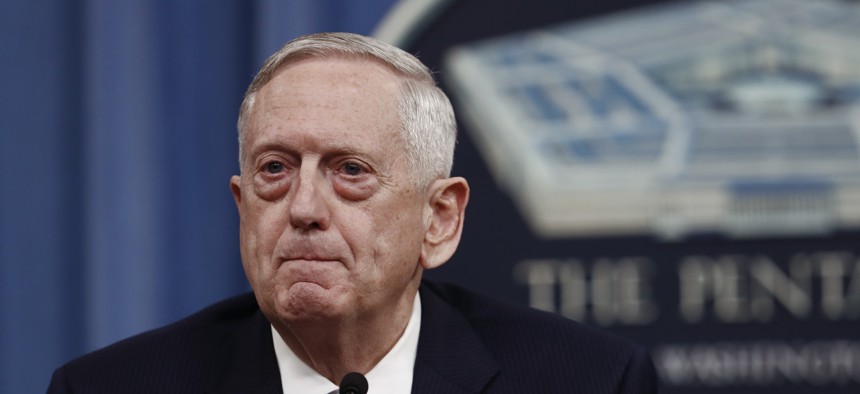A Defense Budget Increase is No More Needed in 2018 than It Was Last Year
A former assistant defense secretary argues the Trump administration’s bump-up was unnecessary, and in fact counterproductive, to national defense.
As part of the bipartisan budget deal that will prevent a government shutdown, Congress and the Trump administration agreed not to slash any of the social programs that candidate and President Trump wanted to put on the chopping block. However, they did agree to the President’s call to pad the Obama administration’s 2017 defense spending request by adding about $15 billion to the Pentagon’s war fund, the Overseas Contingency Operations (OCO) account. This increase, though only half of what President Trump claims that the military needs, was unnecessary, and in fact counterproductive, to our national defense.
First, the $593 billion in the defense appropriations bill is far from the total to be spent on national security in 2017. The figure does not include the $21 billion that the Energy Department spends on nuclear weapons or the $16 billion that pays for defense-related activities funded by other federal agencies. Adding these items to the defense budget brings the total to about $636 billion.
Even this amount understates the cost of national security to the nation. The Treasury Department currently pays more than $83 billion in amortization payments for the military retirement and military retirees healthcare trust funds because the Department of Defense did not provide sufficient resources for these accounts. Treasury loses another $23 billion because military veterans do not pay taxes on part of their earnings.
Second, even before the increase mandated by the budget deal, U.S. defense spending already accounted for more than one-third of global military expenditures, three times as much as that of China, and more than ten times as much as Russia. Moreover, our allies account for another one-third of total worldwide military expenditures.
Third, and despite claims to the contrary, the Pentagon has not been severely affected by the constraints of the 2011 Budget Control Act. Over the past five years, it has received over $90 billion in relief from the spending caps imposed by that law, not counting this year’s additional $15 billion. Then there’s the OCO fund, which is exempt from the caps because it is meant to fund unexpected military operations. But the Pentagon has spent more than half of the more-than-$400 billion the OCO account has received in that time on items having nothing to do with the wars. As White House Budget Chief Mick Mulvaney correctly labeled it when he was in Congress, it is a slush fund.
Fourth, despite Trump’s campaign rhetoric, our military is not in bad shape. In fact, according to retired Gen. David Petraeus, the former commander in Iraq and Afghanistan and CIA Director, the current condition of our military is “awesome.” They are not facing a readiness crisis and the current level of spending on readiness and procurement is more than adequate.
Fifth, giving the military more money will undermine the case for those trying to get the Pentagon to operate more efficiently. For example, in late 2013, then-Defense Secretary Chuck Hagel recognized that the Pentagon budget could not continue to grow exponentially, as it had between 2001 and 2012. He asked the Defense Business Board to analyze administrative costs. The Board finished its study in late 2015; it showed that the Pentagon could save $125 billion over five years by trimming its back-office personnel, which currently exceeds one million people supporting an active duty force of 1.3 million.
The Pentagon is still dealing with cost overruns and delays on its major weapons. In 2015, a report by Deloitte found that the combined cost overruns for major acquisition programs totaled $468 billion. For example, the aircraft carrier Gerald Ford, on which Trump laid out his case for increasing spending on defense, came in two years late and 50 percent over budget.
Finally, the budget deal does not contain a way to pay for the additional funds for the Pentagon. Rather, it adds them to our national debt, which already exceeds $20 trillion, and which Adm. Mike Mullen, the former Chair of the Joint Chiefs of Staff, has called the greatest threat to our national security.
While it’s too late to prevent the Pentagon from getting the extra $15 billion this year, members of the Congress, the Administration and the public should keep these points in mind before allowing another large increase in fiscal 2018.






